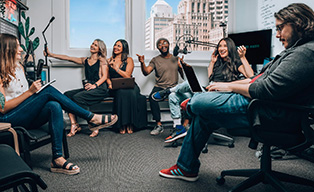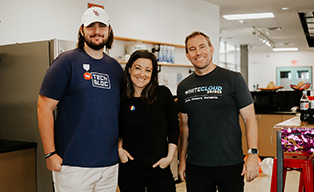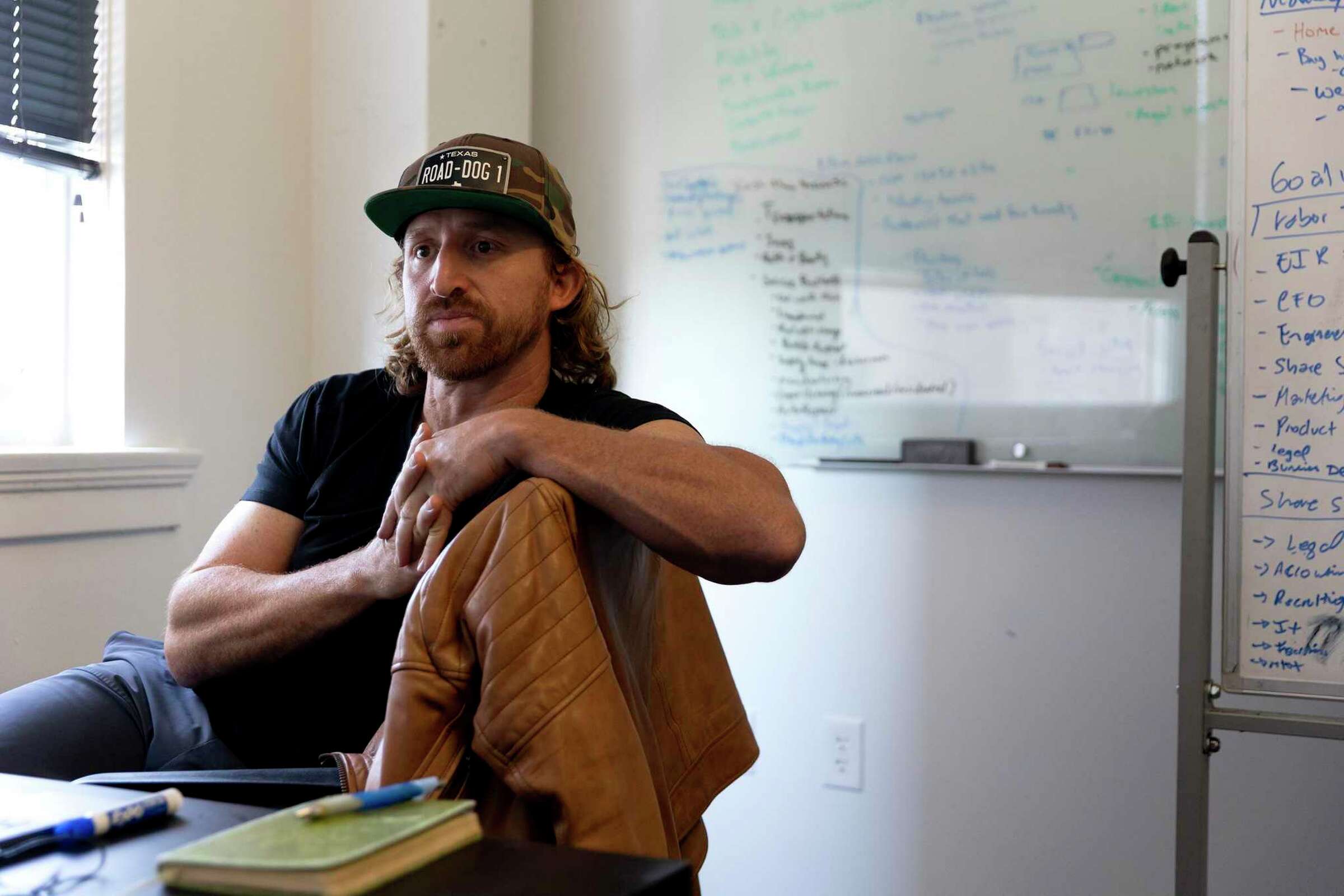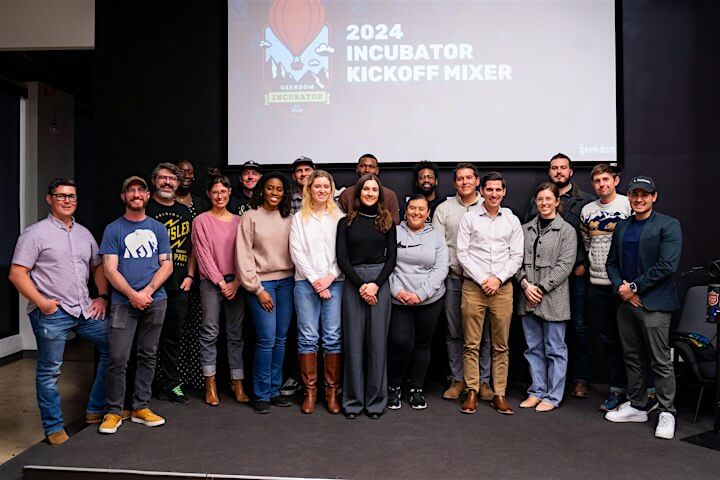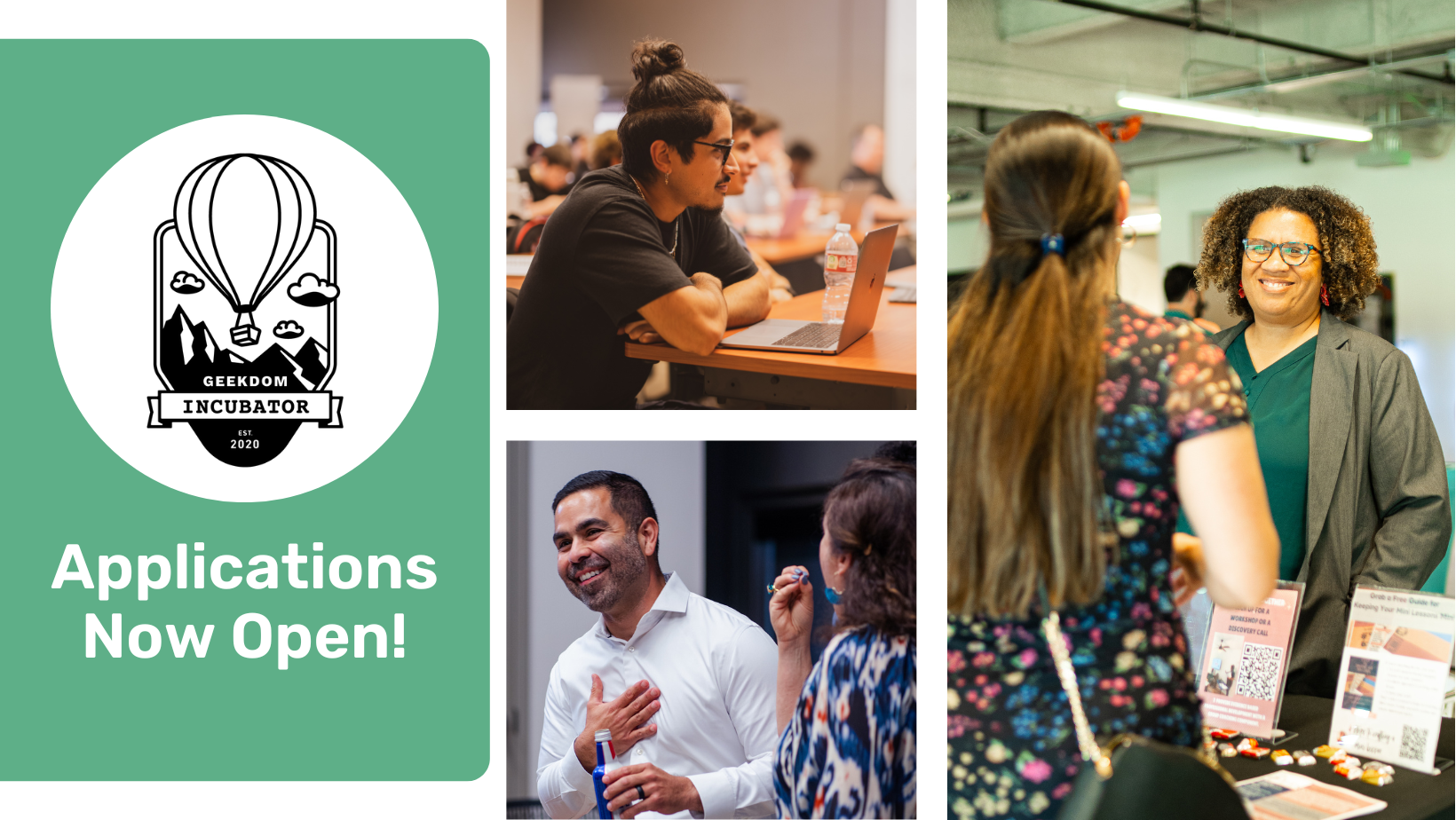The tech sector in any city is defined in large part by its success stories: people who have shown that it is possible to grow profitable startups there, emboldening others to believe they can do the same.
Last year, local entrepreneur Ben Jones became one of the premier successes in San Antonio’s tech ecosystem when he sold Skipcart, the retail-delivery startup he founded in 2018 and led as CEO, to the convenience store chain 7-Eleven. He declined to state the sale price, saying only that it was “very substantial.”
He is now settling into a new role as the first entrepreneur in residence at Geekdom, which has a goal of growing more than 500 startups by 2030; as of last month, it had achieved 104. Toward that end, he is spending 35 hours a month in meetings with entrepreneurs, helping them with typical startup concerns, such as how to raise funding and how to “validate” their products so that big customers will take them seriously.
Jones, who grew up in the small town of Shallowater, outside Lubbock, started his entrepreneurial career in the oil and gas industry before the downturn of 2014 led him to branch into other sectors, including retail.
Since the sale of Skipcart, he’s founded a new venture capital firm, Misfit Ventures, through which he hopes to team with other entrepreneurs to create several companies each year.
“In San Antonio, you have these accelerators and companies and capital. How about we bring some of the smartest people in town with capital, with ideas, and we just co-found companies together?” he said. “What that does is it kind of accelerates the early days of entrepreneurship. If we’re all in the same room, it accelerates that journey.”
He recently sat with the Express-News to tell the story of Skipcart’s growth and to discuss San Antonio’s tech scene and the service he will provide as entrepreneur in residence. The following has been edited for brevity and clarity.
Q: How did you end up in the tech industry?
A: I think it was 2014 when I moved from being in oil and gas, down in the Pleasanton area, to Fredericksburg. Kind of took a dabble in different industries — started a bar, a wine bottling company, a hyperlocal taxi company. Then I got into retail, supplying things for retailers. Consumers buy a lot of stuff, right? I realized there was a market.
I just happened to be doing CrossFit with one of the guys from H-E-B, and he was saying, basically, H-E-B needed to become an e-commerce company. Amazon was gonna get big into grocery delivery, so they wanted to get into delivery. I said, “What do you have today?” Well, we have online curbside. “What if you can offer delivery through that curbside?” He got us in touch with this guy who was in charge of the e-commerce team. And he said, “That’s an amazing idea.”
Q: What did you have at that point?
A: We had no product. It was a very early-stage idea. This guy was grasping onto this little tiny entrepreneur who had no idea what he was doing. But he was like, “I really like it. Let’s go build.” I had validation at that point, and validation meant it was worth the risk for me to continue.
Q: So you developed it with the intention of using it for H-E-B?
A: Yeah. Without H-E-B, the idea wouldn’t exist. I intended to go work for H-E-B as their delivery provider. We got a contract with them and everything. At the time, they had partnered with Instacart. We were taking it to where it was “white label.”
Q: “White label” means you’re creating something that companies can incorporate into their own service.
A: Yeah. H-E-B is offering delivery — who they partner with to deliver it, the consumer doesn’t care. They just care about ordering their groceries online. It gave them the ability to be a delivery company as well and not have to worry about it.
I had no idea about tech, no history about tech.
Q: No coding background?
A: Other than logging onto an email and Facebook. But it’s not about technology for the people that build. It’s about the vision. How do you see the product-market fit and scalability? I don’t think you have to be a tech expert to do really, really well. Just gotta be a visionary.
We finally get this product that exists. And it is a functional product. And H-E-B goes and buys Favor, right? It basically took everything we’d built, everything we’d learned about delivery, connecting drivers with curbside. It all got shut down in a matter of a phone call.
Q: How did you feel about that?
A: You know, it was really tough. Now I have no road map as to where to go next. I bet the farm, I guess, had almost no money left. I was like, “Alright, let’s go find some more customers.” What I do is I start emailing the CEO of Walmart. Finally get some response from his assistant.
Q: Any hard feelings against H-E-B?
A: Um … yeah. As an individual entrepreneur, you kind of take it personal. You don’t ever, until you get into a company, realize not everybody’s gonna like the deal all the time. They’re looking out for their best interests, so they bought Favor. I would say, it was tough for me to look at H-E-B the same after that, but I was taking very much an approach as an entrepreneur, not as a business person. Now I understand why they did what they did.
Q: What impact did COVID-19 have on your business?
A: Being one of the early (delivery) companies, it allowed us to hyper-scale during COVID’s rise. COVID — unfortunate as it was — was a validation of delivery, so it put us on the map. We raised a lot of money. Then it becomes kind of an acquisition flurry. The problem was, it took tons of capital to make it scale, right? That was a big reason we exited, just because the timeline, the capital it would take to get it to profitable was longer than I wanted to play around with.
Q: With Misfit Ventures, you’re taking what you made through the sale of Skipcart and using it as funding for new ventures?
A: I’m taking what I learned, what I made from the sale, and saying, “OK, as an entrepreneur, what do I do next?” I want to go build a company. But what I need is to go find capital, founders, an ecosystem of developers, all this kind of stuff. Finding guys in town that have recently exited, and say, “Hey, come co-found a company with me.” Instead of me operating that company for the long term, I do multiple of them. I co-found anywhere from five to 10 companies a year with these really smart guys.
Q: How do you feel about the tech scene in San Antonio?
A: There’s never a lack of ideas. What there is a lack of is the rest of the ecosystem. You have the CEOs, the risk-takers. But what about the risk-takers of your co-founder, your (vice president) of engineering, your head of finance, your product managers? Where do you find those people? Where they tend to come from, in places like Silicon Valley and Austin, are from other companies that were venture-backed and startups, because they know what it takes to be risky.
Q: Can you find much venture capital in San Antonio?
A: I would say it’s not geographic. San Antonio has a few venture funds: Geekdom fund, Active Capital. But you don’t see a lot of it deployed locally. It goes back to venture capital bets on really big ideas that can get a really big return. It’s a very basic model, and I don’t think this startup ecosystem has allowed that opportunity. Venture capital is not like it was a couple of years ago, where they deploy on anything. San Antonio doesn’t have a lot of startups that are in really, really massive markets, where it’s validated, where they’re ready to get venture capital.
Q: Venture capitalists have grown more stingy, then?
A: I think the macroeconomics of what has happened: inflation, layoffs, interest rates. I think VCs are kind of holding the cash close to them right now. In 2021, early 2022, what was happening was basically venture capitalists had all this capital accessible, plus all these ideas, plus you saw the market just going crazy, so VCs were just kind of writing checks. What you see them doing today is kind of doubling down on investments they’re currently in.
Q: What kind of work do you do as entrepreneur in residence?
A: I take these entrepreneurs at any stage. It could be an idea stage, right? They say, “How do I make this idea a product-market fit?” Because of my experience, I can say, “Here’s what I would do to make it successful.” I’m the right-hand guy.
Q: Could you give an example of a problem someone might come to you with?
A: We have a really great entrepreneur in town — Roman Sandoval with Allosense (a company that makes sensors for electric vehicle battery manufacturing). Allosense is in this position where they have a really great product in the (electric vehicle) space. How do I take this product and let people know my small team can support massive manufacturers like Samsung and LG and Tesla? What I say is, “Well, let’s take a step back. Maybe you can’t get there, but what you can get in is the companies that normally would be testing their batteries.” That way, it validates your product, that it is working. It’s your first step. What that allows him to do is say, “OK, my product-market fit, I know it’s there. My sales journey just needs to be a little bit different to get to the top.” Then it goes to, how do I get my first customer? You have to be a salesman. You have to reach out to these guys. You have to call the CEO.

